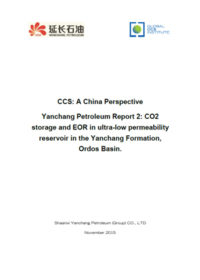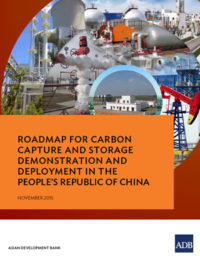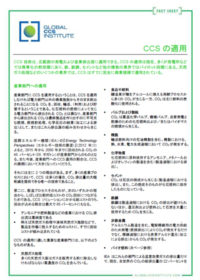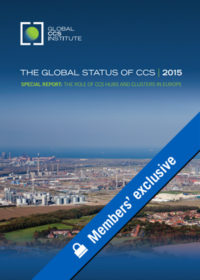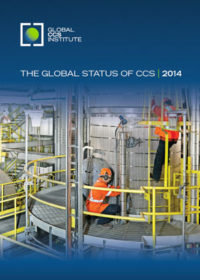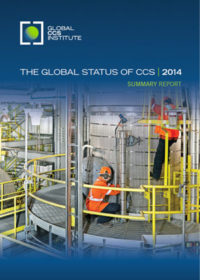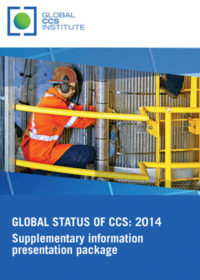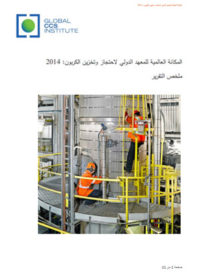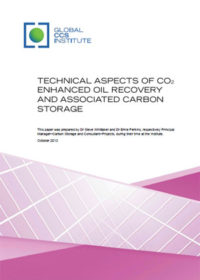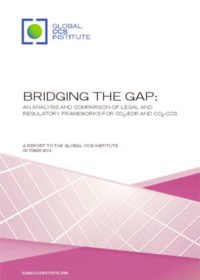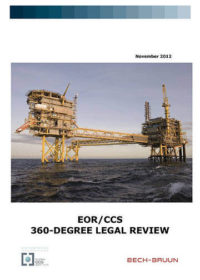Resources
Publications
Our publications, reports and research library hosts over 500 specialist reports and research papers on all topics associated with CCS.
View our Publication Library Disclaimer.
Filter by
Yanchang Petroleum report 2: CO2 storage and EOR in ultra-low permeability reservoir in the Yanchang Formation, Ordos Basin
22nd January 2016
Topic(s): Carbon capture use and storage (CCUS), CO2 storage, CO2 utilisation
To promote the development of CCS in China, the Global CCS Institute and China National Development and Reform Commission (NDRC) held a joint carbon capture, utilisation and storage (CCUS) workshop in Yan’An China in July 2013. Out of this collaboration the Global CCS Institute has commissioned Yanchang Petroleum Group to produce four knowledge-sharing reports on its integrated CCS project.
This second report of the series discusses the storage aspects of Yanchang Petroleum CCUS Project. It highlights project achievements and lessons learned from the project.
Christopher Consoli, Institute Senior Adviser for Storage, Asia-Pacific provides an overview of this report in an Insight available on the Global CCS Institute website.
Disclaimer
The content within the Global CCS Institute Publications, Reports and Research Library is provided for information purposes only. We make every effort and take reasonable care to keep the content of this section up-to-date and error-free. However, we make no claim as to its accuracy, currency or reliability.
Content and material featured within this section of our website includes reports and research published by third parties. The content and material may include opinions and recommendations of third parties that do not reflect those held by the Global CCS Institute.
Roadmap for carbon capture and storage demonstration and deployment in the People’s Republic of China
2nd December 2015
Topic(s): Carbon capture use and storage (CCUS), CO2 capture, CO2 storage, CO2 utilisation, Domestic policy, Policy law and regulation
This Roadmap provides information on how China could achieve its climate goals through policy measures that encourage the deployment of CCS out to 2050. The work draws from economic modelling by experts at The Institute of Energy, Environment and Economy at Tsinghua University, and The International Institute for Applied Systems Analysis.
Additional Work Package Reports
- Road Map for Carbon Capture and Storage (CCS) Demonstration and Deployment: Work Package 1 Report - Review of CCS Roadmaps (March 2015)
- Road Map for Carbon Capture and Storage (CCS) Demonstration and Deployment: Work Package 4 Report - CCS Regulatory Framework for the People's Republic of China (March 2015)
- Road Map for Carbon Capture and Storage (CCS) Demonstration and Deployment: Work Package 5a Report and 5b Report - Opportunities for CCS Deployment in the People's Republic of China under Low Carbon Transformation Scenarios (Mar 2015)
- Road Map for Carbon Capture and Storage (CCS) Demonstration and Deployment: Component B - Oxy-Fuel Combustion Technology Assessment
Insights about this report, from Lawrence Irlam (Global CCS Institute Senior Adviser Policy & Economics), Tony Wood (the Grattan Institute’s Energy Program), and Annika Seiler (Finance Specialist (Energy) with the Asian Development Bank (ADB)) are available on the Global CCS Institute website.
Disclaimer
The content within the Global CCS Institute Publications, Reports and Research Library is provided for information purposes only. We make every effort and take reasonable care to keep the content of this section up-to-date and error-free. However, we make no claim as to its accuracy, currency or reliability.
Content and material featured within this section of our website includes reports and research published by third parties. The content and material may include opinions and recommendations of third parties that do not reflect those held by the Global CCS Institute.
インスティテュートは、CCSに関する基本情報をまとめたFACT SHEETシリーズを作成した。「CCSの適用」は、CCSの適用可能性に焦点を当て概要をとりまとめたものである。
Japanese translation of CCS applications.
Disclaimer
The content within the Global CCS Institute Publications, Reports and Research Library is provided for information purposes only. We make every effort and take reasonable care to keep the content of this section up-to-date and error-free. However, we make no claim as to its accuracy, currency or reliability.
Content and material featured within this section of our website includes reports and research published by third parties. The content and material may include opinions and recommendations of third parties that do not reflect those held by the Global CCS Institute.
The global status of CCS: 2015. Special report: the role of CCS hubs and clusters in Europe
4th November 2015
Topic(s): Carbon capture use and storage (CCUS), CO2 hubs, CO2 utilisation, Economics
This question and answer style special report focuses on the role CCS hubs and clusters can play in enhancing the deployment of CCS in Europe, especially in the context of reducing emissions from industrial processes.
Disclaimer
The content within the Global CCS Institute Publications, Reports and Research Library is provided for information purposes only. We make every effort and take reasonable care to keep the content of this section up-to-date and error-free. However, we make no claim as to its accuracy, currency or reliability.
Content and material featured within this section of our website includes reports and research published by third parties. The content and material may include opinions and recommendations of third parties that do not reflect those held by the Global CCS Institute.
The Global Status of CCS: 2014
5th November 2014
Topic(s): Carbon capture use and storage (CCUS), CO2 capture, CO2 storage, CO2 transport, CO2 utilisation
The Global CCS Institute is pleased to announce the release of our Global Status of CCS: 2014 report.
The report provides a detailed overview of the current status of large-scale CCS projects worldwide, finding that 2014 has been a pivotal year for CCS, which is now a reality in the power industry.
For the first time, the report introduces and provides links to project descriptions for around 40 lesser scale ‘notable’ CCS projects. The 2014 report focuses on a number of ‘notable’ projects in Japan.
The Global Status of CCS: 2014 report provides a comprehensive overview of global and regional developments in CCS and what is required to support global climate mitigation efforts. Providing a number of key recommendations for decision makers, The Global Status of CCS: 2014 report is an important reference guide for industry, government, research bodies and the broader community.
Supplementary Information Presentation Package
Disclaimer
The content within the Global CCS Institute Publications, Reports and Research Library is provided for information purposes only. We make every effort and take reasonable care to keep the content of this section up-to-date and error-free. However, we make no claim as to its accuracy, currency or reliability.
Content and material featured within this section of our website includes reports and research published by third parties. The content and material may include opinions and recommendations of third parties that do not reflect those held by the Global CCS Institute.
The Global Status of CCS: 2014 Summary Report
5th November 2014
Topic(s): Carbon capture use and storage (CCUS), CO2 capture, CO2 storage, CO2 transport, CO2 utilisation
The Global Status of CCS: 2014 Summary Report provides an executive overview of the key findings and recommendations contained in the Institute’s Global Status of CCS: 2014 report.
Disclaimer
The content within the Global CCS Institute Publications, Reports and Research Library is provided for information purposes only. We make every effort and take reasonable care to keep the content of this section up-to-date and error-free. However, we make no claim as to its accuracy, currency or reliability.
Content and material featured within this section of our website includes reports and research published by third parties. The content and material may include opinions and recommendations of third parties that do not reflect those held by the Global CCS Institute.
The Global Status of CCS: 2014 Supplementary Information Presentation Package
5th November 2014
Topic(s): Carbon capture use and storage (CCUS), CO2 capture, CO2 storage, CO2 transport, CO2 utilisation
The Supplementary Information presentation package includes chart materials not included in the Global Status of CCS: 2014 report. This material provides additional detail on the status of large-scale CCS projects globally. When used in conjunction with previous status reports, it provides researchers with access to the world’s most comprehensive historical data set on large-scale CCS projects.
Disclaimer
The content within the Global CCS Institute Publications, Reports and Research Library is provided for information purposes only. We make every effort and take reasonable care to keep the content of this section up-to-date and error-free. However, we make no claim as to its accuracy, currency or reliability.
Content and material featured within this section of our website includes reports and research published by third parties. The content and material may include opinions and recommendations of third parties that do not reflect those held by the Global CCS Institute.
المكانة العالمية للمعهد الدولي لاحتجاز وتخزين الكربون | 2014
5th November 2014
Topic(s): Carbon capture use and storage (CCUS), CO2 capture, CO2 storage, CO2 transport, CO2 utilisation
تم البدء بتنفيذ أول مشروع في العالم لاحتجاز وتخزين الكربون على النطاق الواسع في قطاع الطاقة في شهر تشرين الأول من عام 2014 على محطة كهرباء باونداري دام في ساسكاتشوان، كندا. ومن المقرر أن يدخل مشروعان إضافيان لاحتجاز وتخزين الكربون على النطاق الواسع حيز التنفيذ في قطاع الطاقة- في مرفق مقاطعة كمبر للطاقة في ولاية الميسيسيبي ومشروع بترا نوفا لاحتجاز الكربون في ولاية تكساس في عامي 2015 و2016 على التوالي. ويجري أيضاً العمل على أول مشروع في العالم لاحتجاز وتخزين الكربون على النطاق الواسع في قطاع الحديد والصلب، ومشروع أبو ظبي لاحتجاز وتخزين الكربون في الإمارات العربية المتحدة. وهذه المشاريع الأربعة هي من بين 22 مشروع لاحتجاز وتخزين الكربون على النطاق الواسع التي يجري العمل عليها أو تنفيذها في جميع أنحاء العالم- وهو ضعف الرقم الذي كان في بداية هذا العقد.
Disclaimer
The content within the Global CCS Institute Publications, Reports and Research Library is provided for information purposes only. We make every effort and take reasonable care to keep the content of this section up-to-date and error-free. However, we make no claim as to its accuracy, currency or reliability.
Content and material featured within this section of our website includes reports and research published by third parties. The content and material may include opinions and recommendations of third parties that do not reflect those held by the Global CCS Institute.
Technical aspects of CO2 enhanced oil recovery and associated carbon storage
4th November 2013
Topic(s): Carbon capture use and storage (CCUS), CO2 utilisation
Injection of carbon dioxide into mature oil reservoirs is a proven effective method for improving oil production that can be applied to a variety of oil reservoirs in different geological settings. Retention of the injected carbon dioxide within the reservoir is an intrinsic part of the CO2 EOR process, and effectively all CO2 purchased for injection will ultimately remain stored within the oil field at the end of EOR operations. This storage aspect has driven interest in CO2 EOR as a potential method of CCS that has a supportive business component.
The storage opportunities within CO2 EOR floods are generally not maximised, although there are no over-riding technical impediments preventing using more of the pore space for storage. Transitional, or residual oil zones, and stacked reservoirs all pose significant opportunities to increase storage amounts well beyond that used strictly for EOR. While deploying monitoring equipment and determining suitable baselines may present challenges to some existing operations, technical solutions can be found to address most of these issues.
Disclaimer
The content within the Global CCS Institute Publications, Reports and Research Library is provided for information purposes only. We make every effort and take reasonable care to keep the content of this section up-to-date and error-free. However, we make no claim as to its accuracy, currency or reliability.
Content and material featured within this section of our website includes reports and research published by third parties. The content and material may include opinions and recommendations of third parties that do not reflect those held by the Global CCS Institute.
Bridging the gap: an analysis and comparison of legal and regulatory frameworks for CO2-EOR and CO2-CCS
1st October 2013
Topic(s): Carbon capture use and storage (CCUS), CO2 utilisation
This paper seeks to assist policymakers in evaluating the potential for integrating supplies of captured anthropogenic CO2 into profitable EOR operations as one part of a long-term strategy for developing widespread deployment of CCS technology.
Part I reviews the existing legal and regulatory frameworks governing CO2 transactions, transport, injection and storage in the context of EOR operations.
Part II reviews the changes to this existing EOR–based framework that are in various stages of adoption in order to allow for CCS–based storage.
Part III builds on these two prior sections to summarise issues that need to be addressed, and to set forth conclusions and recommendations for steps that may be taken by jurisdictions looking to harness the potential value of CO2–based EOR as part of a long-term strategy of using CCS technology as an emissions reduction tool.
Disclaimer
The content within the Global CCS Institute Publications, Reports and Research Library is provided for information purposes only. We make every effort and take reasonable care to keep the content of this section up-to-date and error-free. However, we make no claim as to its accuracy, currency or reliability.
Content and material featured within this section of our website includes reports and research published by third parties. The content and material may include opinions and recommendations of third parties that do not reflect those held by the Global CCS Institute.
Carbon capture through innovative commercial structuring in the Canadian oil sands: a project overview of the North West Sturgeon Refinery
29th April 2013
Topic(s): Carbon capture use and storage (CCUS), CO2 utilisation
The fully integrated project will capture, use for EOR and geologically sequester over 1.2 million tonnes per year of 99% pure, dry CO2, the equivalent to removing approximately 225,000 vehicles from the road. The CO2 from the NWSR will also be the anchor supply for the Alberta Carbon Trunk Line (ACTL), an open access CO2 pipeline being developed by Enhance Energy Inc. The ACTL has public funding which will support the development of a common CO2 handling infrastructure for EOR in Alberta.
The willingness of the Alberta and Canadian governments to support large scale CCS projects with the creation of a CCS Fund and development of an effective CO2 storage regulatory framework was essential for the CO2 capture component of the NWRP and ACTL to proceed.
Disclaimer
The content within the Global CCS Institute Publications, Reports and Research Library is provided for information purposes only. We make every effort and take reasonable care to keep the content of this section up-to-date and error-free. However, we make no claim as to its accuracy, currency or reliability.
Content and material featured within this section of our website includes reports and research published by third parties. The content and material may include opinions and recommendations of third parties that do not reflect those held by the Global CCS Institute.
EOR/CCS 360-degree legal review
1st November 2012
Topic(s): Carbon capture use and storage (CCUS), CO2 utilisation, Policy law and regulation
Disclaimer
The content within the Global CCS Institute Publications, Reports and Research Library is provided for information purposes only. We make every effort and take reasonable care to keep the content of this section up-to-date and error-free. However, we make no claim as to its accuracy, currency or reliability.
Content and material featured within this section of our website includes reports and research published by third parties. The content and material may include opinions and recommendations of third parties that do not reflect those held by the Global CCS Institute.
